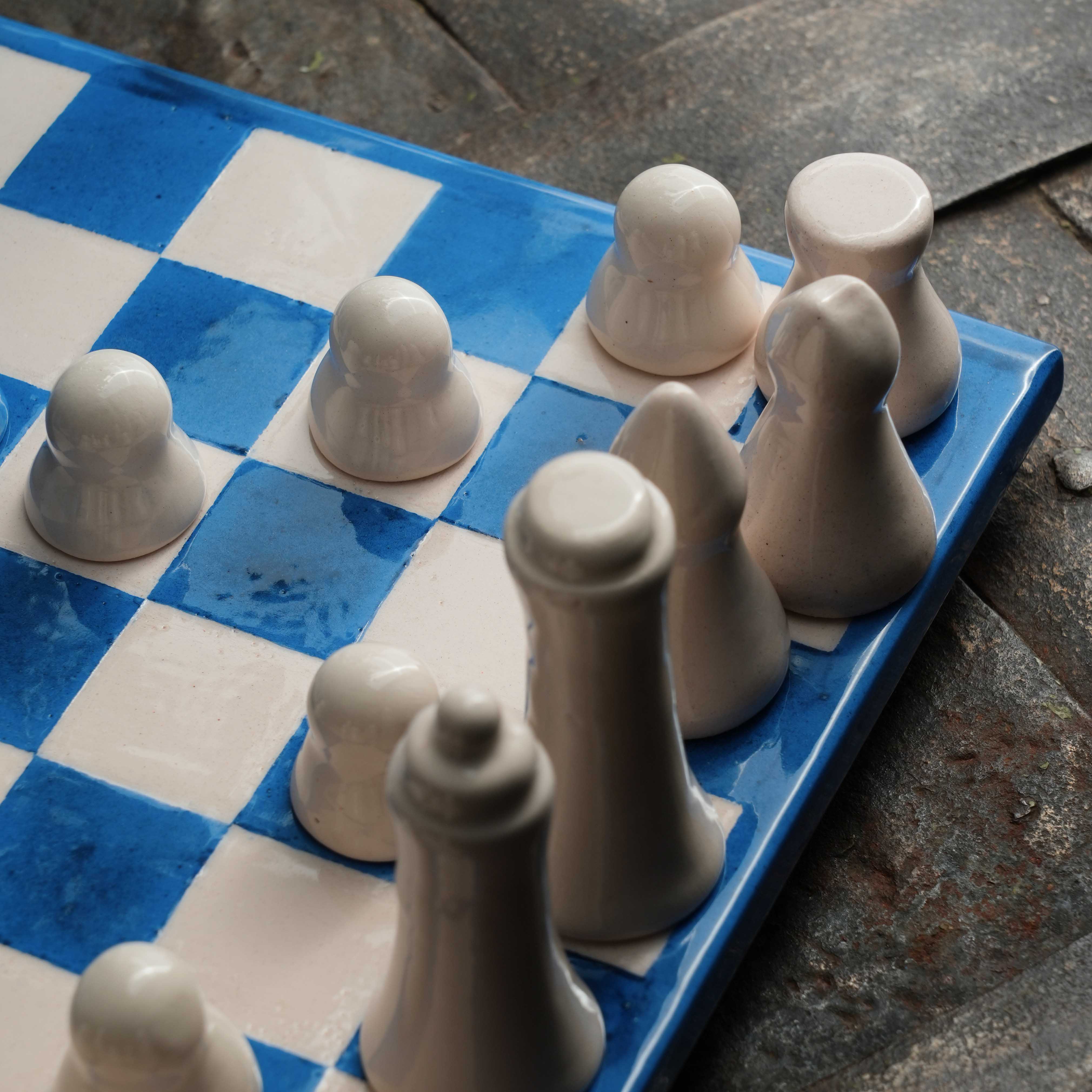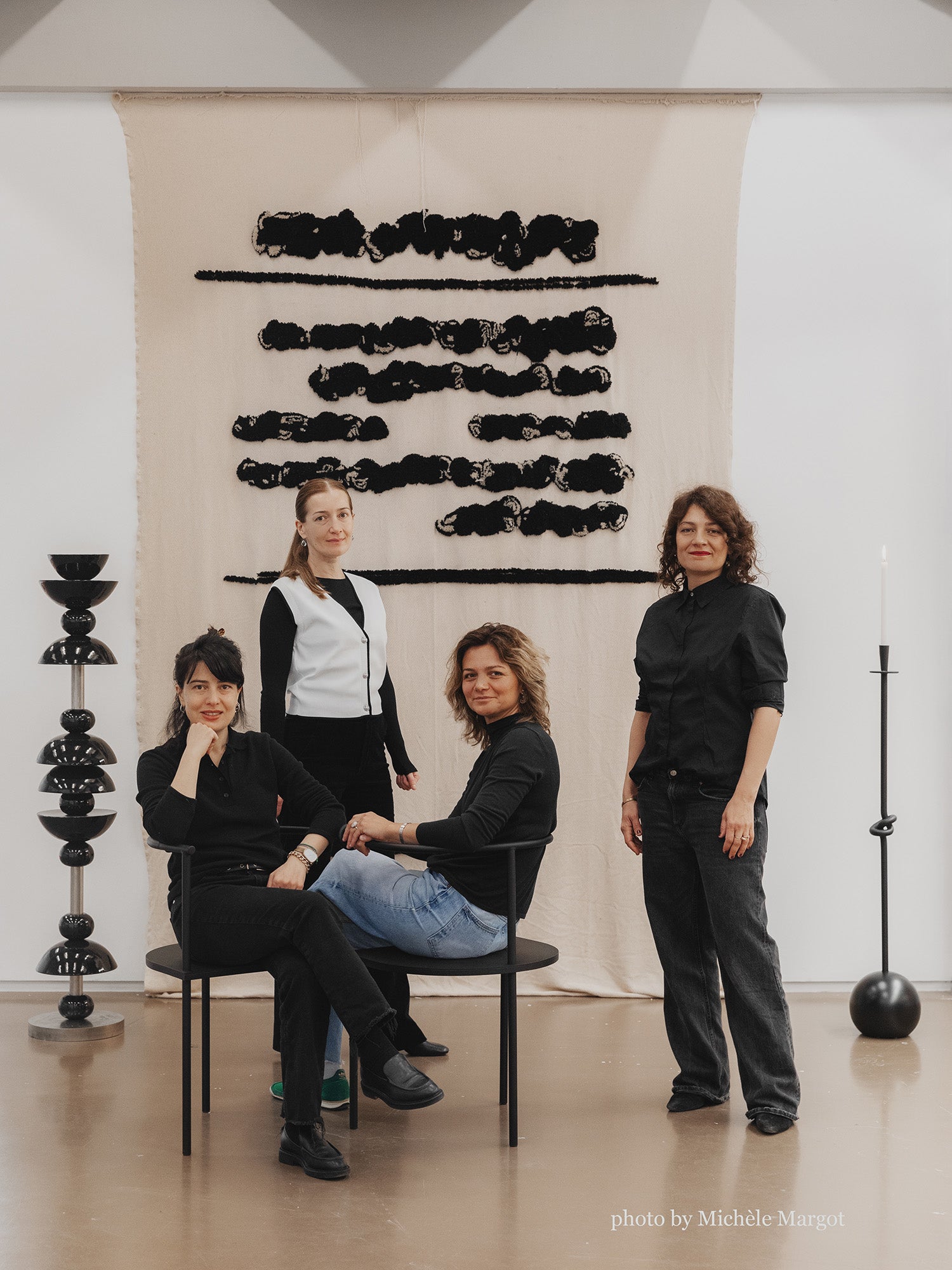
From March 13th to March 16th, 2025, the Vanderborght Building in Brussels became the heart of contemporary collectible design, hosting the COLLECTIBLE Fair—a one-of-a-kind platform for the showcase and discovery of the best in contemporary collectible, experimental, and limited-edition design. This year, Georgian designers made a striking debut, presenting a visionary collection that blurred the lines between functionality and art. Featuring Design Bureau with Nia Mgaloblishvili, Ia Liparteliani, and Sophio Shevardnadze under their new brand Madam Bozarjiants, alongside independent designer Anuka Tavartkiladze, the Georgian presentation captivated visitors with its poetic minimalism, sculptural storytelling, and refined craftsmanship.
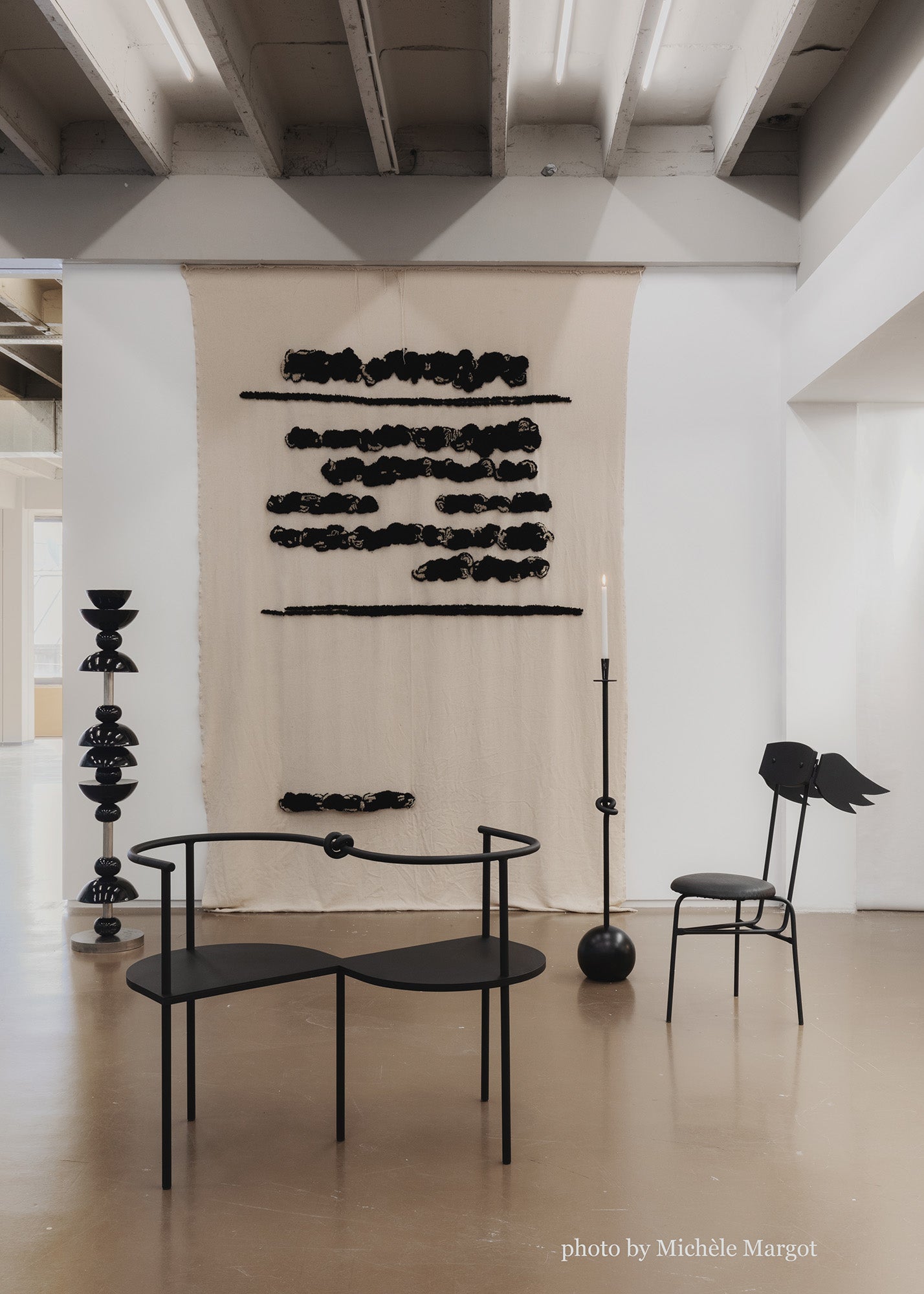
Gathered Fragments: Repression, Resilience, and Sacred Beauty
At COLLECTIBLE 2025, Madam Bozarjiants by DesignBureau presented Gathered Fragments, an evocative collection of sculptural furniture, textile art, and avant-garde lighting that explored the emotional and historical weight of displacement. Through this installation, designers and artists Ia Liparteliani, Anuka Tavartkiladze, Sophio Shevardnadze, and Nia Mgaloblishvili engaged in a profound meditation on loss, memory, and resilience, transforming once-cherished household objects into symbols of endurance, nostalgia, and sacred beauty.
Rooted in the trauma of forced displacement during the Soviet era, Gathered Fragments was a journey through the material remnants of lives abruptly uprooted. The exhibition paid tribute to the Bozarjiants family, whose home and belongings were confiscated as part of the Soviet regime’s systematic repression. By recontextualizing displaced objects, the collection explored how personal artifacts—once expressions of identity and domestic warmth—become fragmented relics of history.
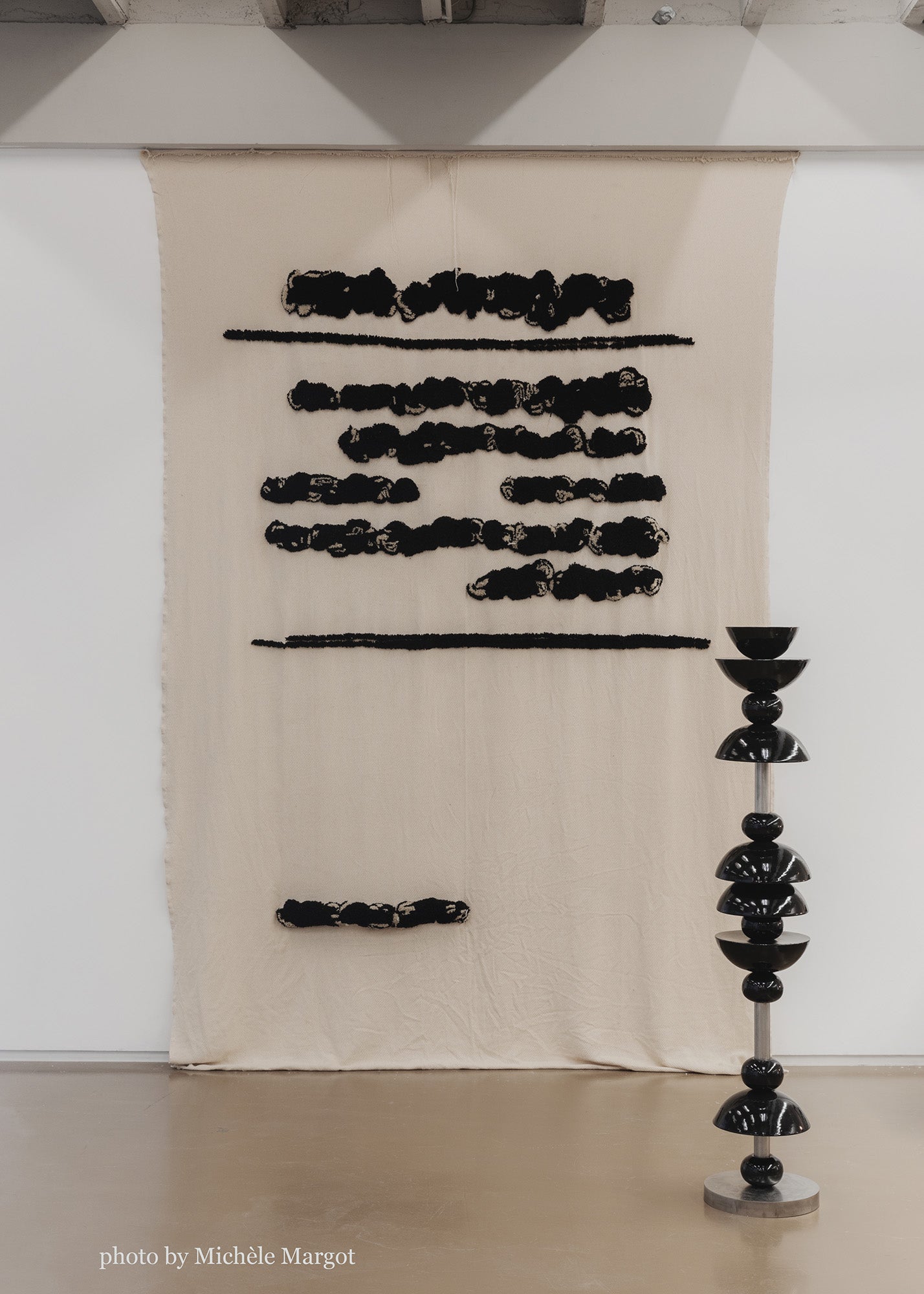
A Narrative Woven in Material and Form
The curated space at COLLECTIBLE 2025 was designed to immerse visitors in an atmosphere of both rupture and reverence. The exhibition layout reflected the chaotic yet poetic nature of exile, with objects scattered yet connected, speaking to both oppression and the indomitable human spirit.
At the heart of the installation, a powerful fusion of textile and sculpture served as an anchor to the narrative. A handwoven wall carpet, marked by bold black tufted lines, resembled an abstract script — an encrypted language of displacement. Its textured markings symbolized the traces of lost homes, untold stories, and fragmented memories. In front of it, a stacked ceramic sculpture composed of glossy black hemispheres reinforced the rhythm of balance and imbalance, loss and reconstruction.
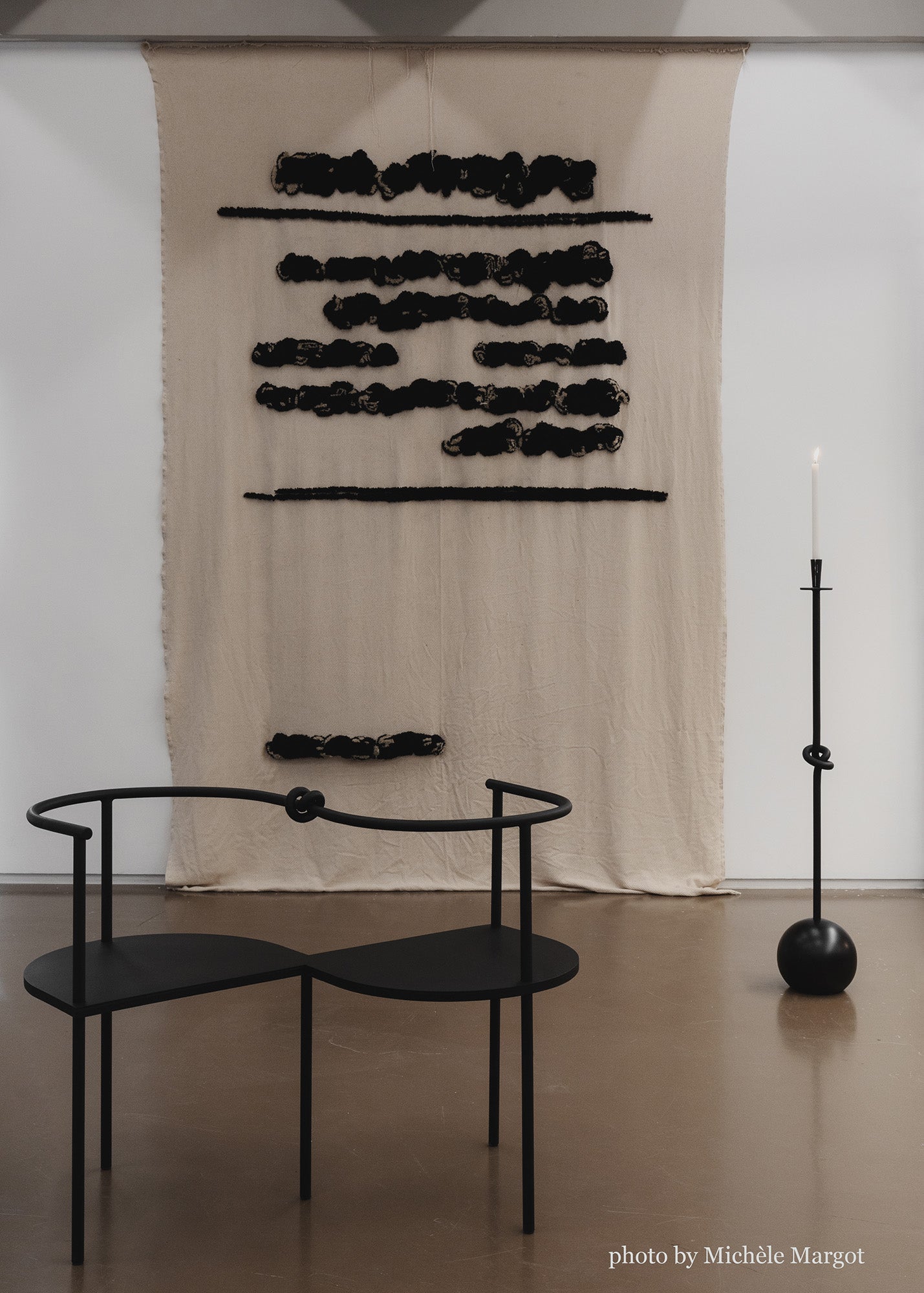
To the left, the Lover’s Chair—a sculptural bench bound by a knotted backrest—expressed the interwoven nature of relationships and resilience. The knot became a symbol of unbroken connections, even in times of rupture. Next to it, the Knot Candle Holder stood as a monument to stability amid turmoil, its sculptural form capturing the interplay of strength and fragility.
To the right, a winged chair evoked a visual metaphor for flight and escape, reinforcing the idea of movement beyond confinement. This piece embodied Design Bureau’s philosophy of integrating poetic storytelling into functional design, urging viewers to reflect on the ways in which home and identity are shaped by displacement.
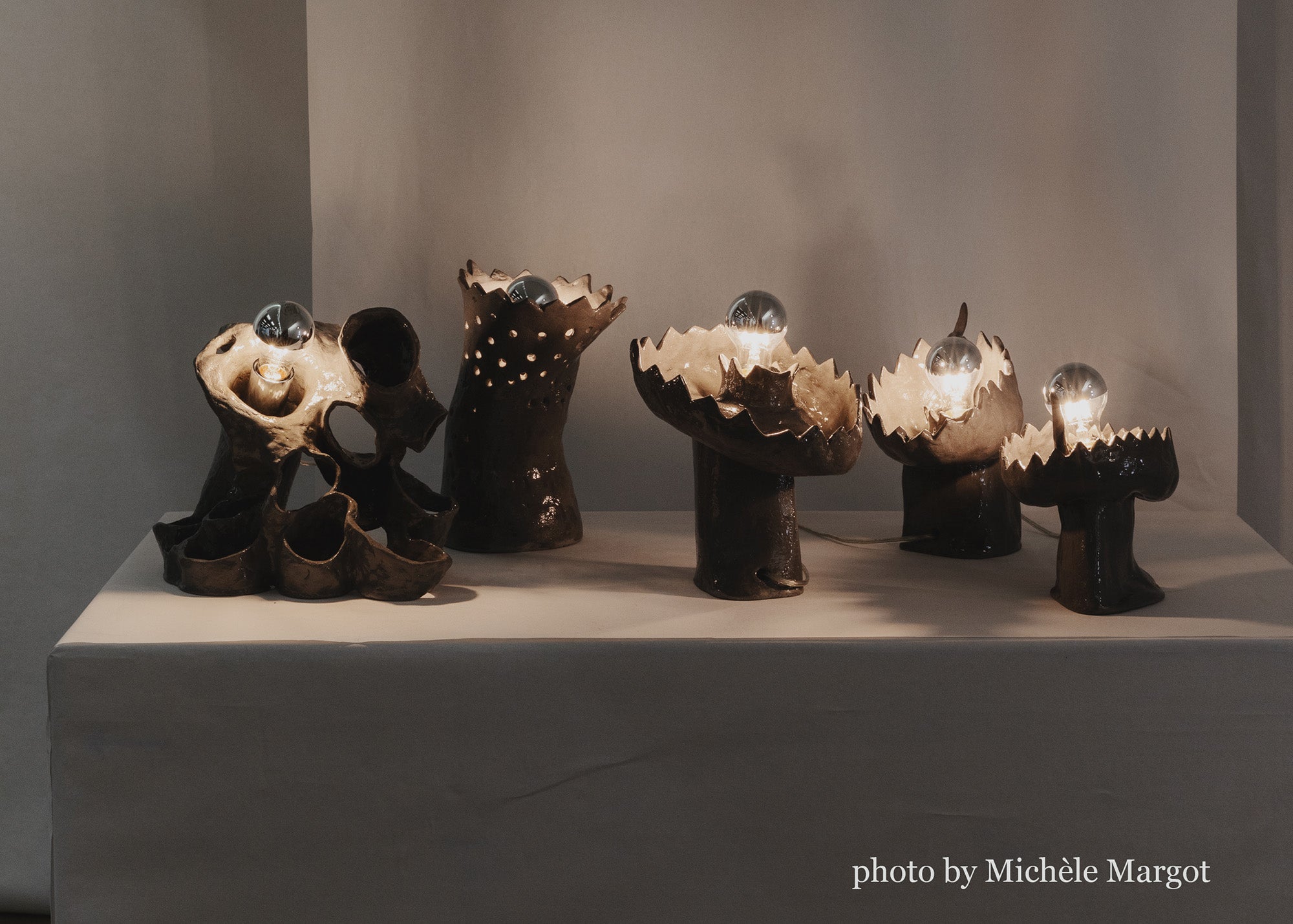
Between Erosion and Illumination
The collection by Ia Liparteliani introduced a series of ceramic lamps that exuded primal energy. These hand-molded clay forms—reminiscent of eroded rock formations or fossilized remains— expressed the raw, earthly resilience of those who rebuild after loss. Embedded mirrored bulbs reflected their surroundings, creating an interplay between history and present, loss and illumination.
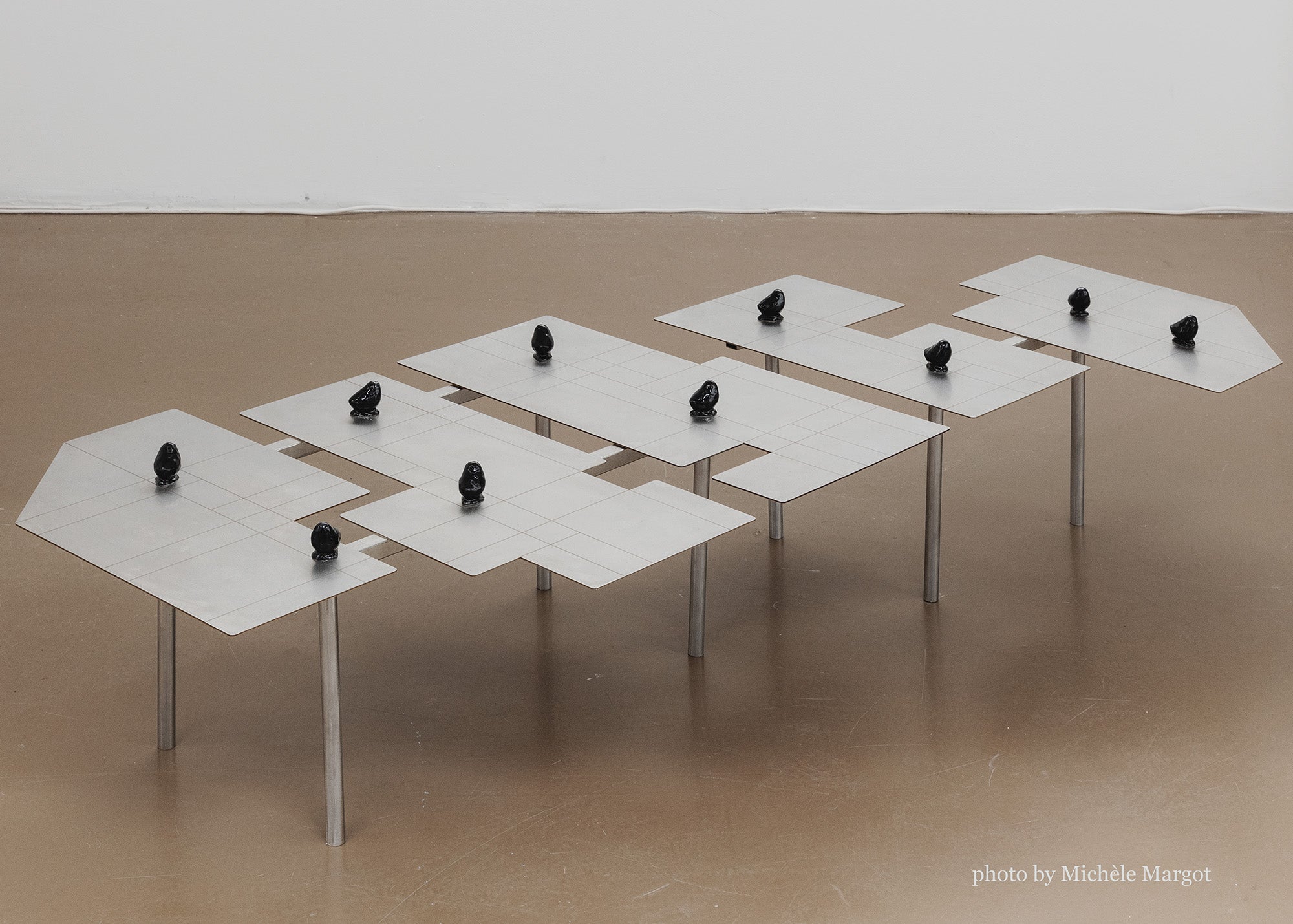
Opposite, a layered, fragmented table stood as an architectural intervention, recalling urban landscapes altered by time and forced migration. Punctuated by delicate ceramic birds, the table embodied the intersection of nature and constructed environments, fragility and endurance.
A towering candle holder dominated the space with its raw geometric silhouette, its jagged steel edges reflecting the tension between permanence and displacement. Light flickered against its surfaces, mirroring the way history casts long and shifting shadows over the present.
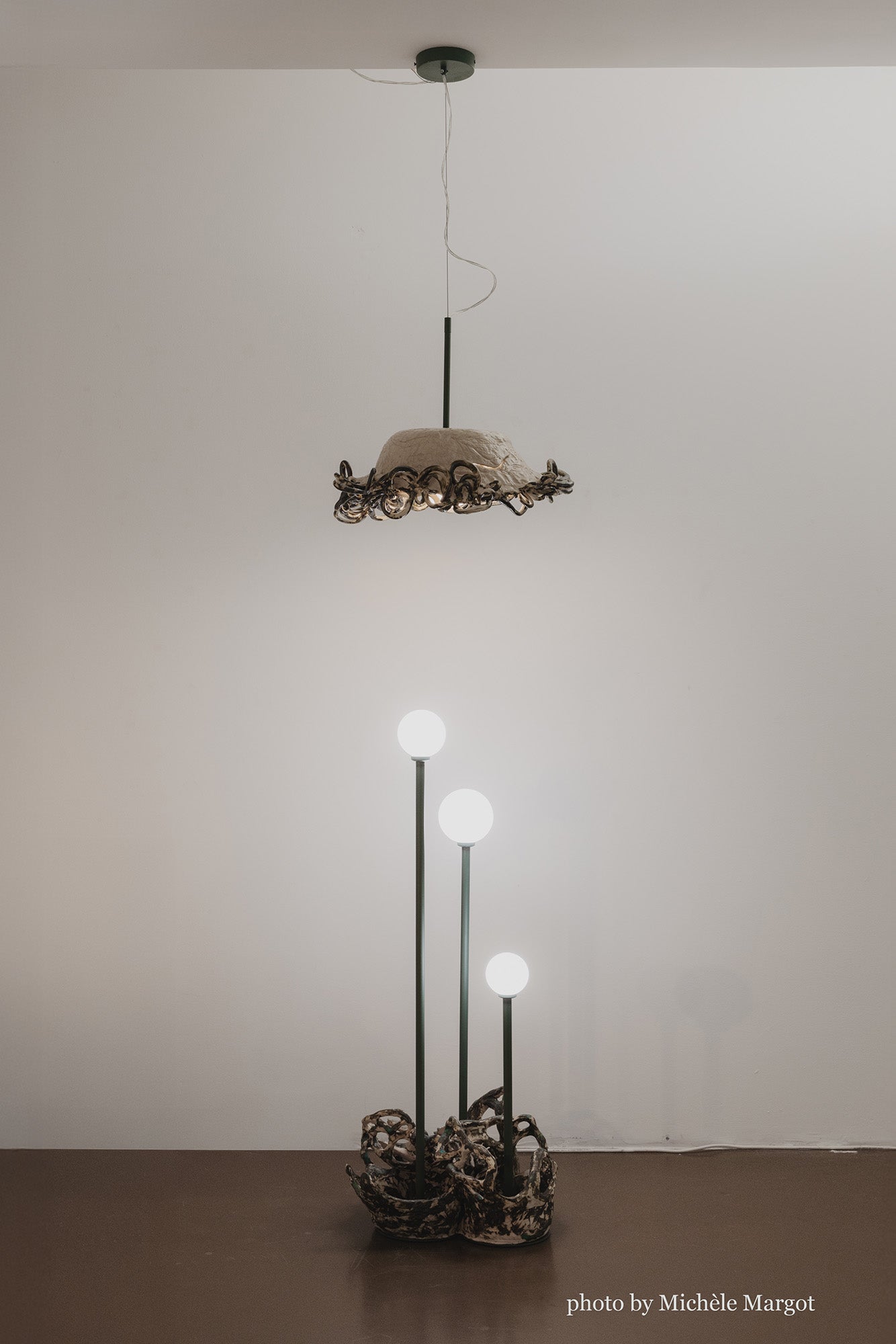
A Testament to Memory, History, and Human Spirit
Gathered Fragments was more than an exhibition—it was a poetic act of remembrance. It invited visitors to see objects not as mere artifacts but as witnesses to history, each imbued with the weight of past lives and lost places. The collection bridged the personal and the universal, presenting works that were visibly displaced yet spiritually whole.
Through their collaborative vision, Madam Bozarjiants and its designers wove together a powerful dialogue between the past and the present, inviting audiences to confront the invisible scars of history while celebrating the resilience of the human spirit. By elevating abandoned domestic objects to the level of sacred relics, the exhibition transformed loss into legacy, displacement into dialogue, and fragments into a cohesive story of survival and beauty.
March 15, 2025 by Anzelika Rieck

